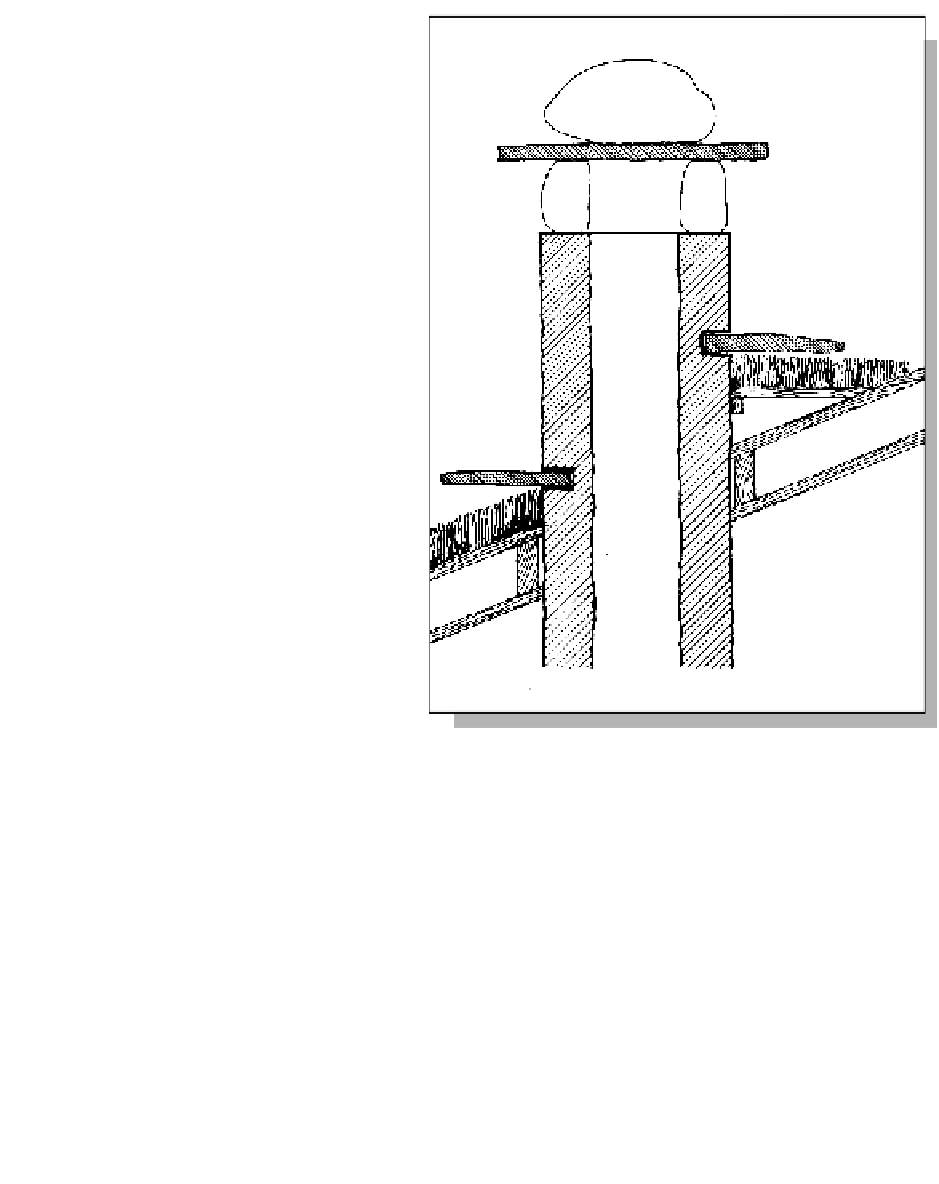Civil Engineering Reference
In-Depth Information
Wind
The strength of the wind depends upon the
height of the house and the local wind con-
ditions. The stronger the wind, the slower
the plant growth. Wind also has a cooling
effect and can increase the drying rate,
even causing physical damage in certain
situations. For very exposed areas, planti-
ng should surround the building to protect
it, with a thicker layer of earth on the roof,
mixed with stones to give the roots a better
hold.
Rainfall
Even if the earth in certain cases can be
waterlogged, water is something that the
planted roof needs in very large quanti-
ties. There is no groundwater reserve for
them to draw on during a dry period. They
are totally dependent upon the storage
capacity of the layer of earth on the roof.
A short dry period is no problem; after a
little rain the plants can quickly recover.
Shading can reduce solar penetration and
a thicker layer of earth can store more
water, especially if it contains more clay
than sand. Automatic watering systems
are necessary if vegetables are to be
grown. Grey drainage water from the
household can be used for extra fertiliza-
tion.
Figure 15.14: Slates used as protection from rain around the
chimney.
Pollution
Green planting has a very positive effect
on air pollution, but it can also be damaged
by it. This can only occur in situations of
extreme pollution, where there are strong concentrations of ozone, or dust that settles on
the leaves and prevents photosynthesis. If the earth becomes too acid, lime can be
added.
Erosion
Planted roofs do not receive any nutrition from the natural nutritional cycle, but are all
the time losing humus, minerals, salts etc., as they are washed out. It is therefore nat-
ural to start with very rich earth. A little compost can be added occasionally, and autumn
leaves should be left lying. The correct mix of plants can also add to the richness of the
earth.

